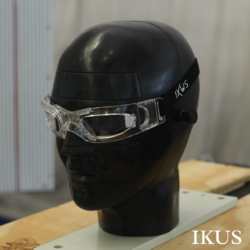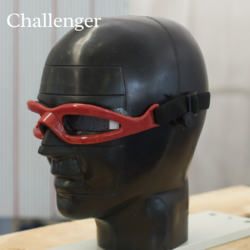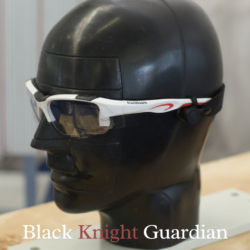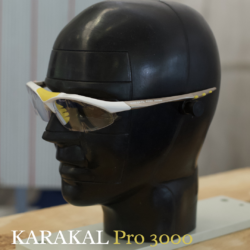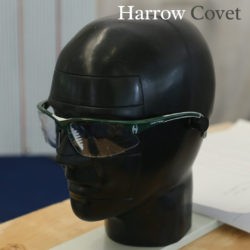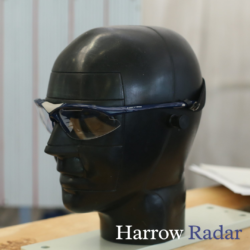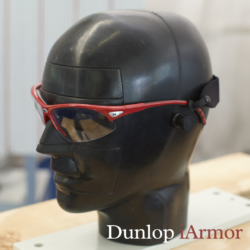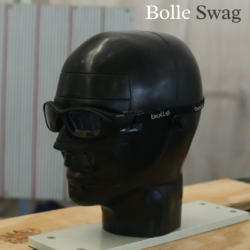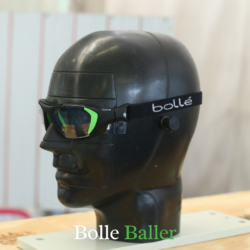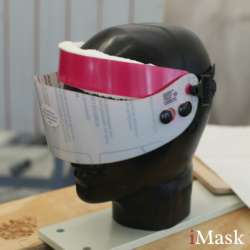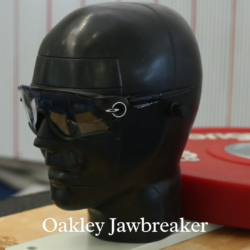T&RA Eye Protection
T&RA Eye Protection Notice
The T&RA strongly recommends the use of eye protection for both Real Tennis and Rackets
The T&RA advice on Eye Protection is that if players wish to purchase eyewear, they are recommended to choose brands that have been passed to one of the International Squash Specifications. Here are the International Specifications for Squash:-
UK BS 7930-1:1998
Aus/NZ AS/NZS 4066
US ASTM F803 ASTM F3164-19
Canada CSA P400
T&RA advisory – eye protection
Executive summary
Eye injuries can happen and there is nothing so far identified as available in the current market which would completely protect the eye in all circumstances.
Four general conclusions from the testing process:
- a strap would prevent some lateral damage caused by frame movement;
- no polycarbonate lenses shattered;
- wearing eye-protection in almost all circumstances would not cause any additional damage to the eye upon impact, but was highly likely to reduce damage; and
- consider replacing any eye-protection which has suffered a significant impact.
Background and testing regime
Following a risk assessment, it was recommended that eye-protection testing in Real Tennis was carried out with some urgency. Although eye-protection is recommended, this is currently not mandatory. There have been cases of eye injuries in the sport, some of which have been lifechanging. The testing process was designed to assess the protection provided by a selection of representative eye-protectors, which are currently available.
Eleven varieties of (largely WSF approved) eye-protectors were submitted to the Experimental Techniques Centre, Brunel University, for simulated impact testing, which involved a Real Tennis ball being fired at velocity onto the lens. The testing was performed in accordance to BS7930-1:1998 (Eye protectors for racquet sports). Although written for squash, the test methodology was considered to be representative and applicable to Real Tennis.
Real Tennis balls were fired at three speeds, 45mph, 70mph and 90mph, directly at the headform (frontal). The process was repeated from a 45 degrees angle at 45mph (lateral), representing a likely deflection off racquet or tambour or bandeau. Carbon paper was placed on the iris, covering the eye position on the headform, to determine whether the eye suffered any impact.
Where a strap was not provided on the eye-protector, a separate strap was used to reduce any movement of the protectors upon impact.
Failure criteria
After testing for protection from frontal and lateral impact in accordance with ISO 18526-3:2020, 7.3.1, the following defects of the lens or frame are failures when inspecting in accordance with ISO 18526-3:2020, 6.1:
a Cracking through the entire thickness into two or more pieces;
b Protector separates into two or more pieces;
c Lens has become dislodged from its normal position;
d Material becomes detached from the surface opposite to that impacted;
e Ball passes through the protector; or
f Contact of the ball or the protector with the eye of the test headform.
Eye-protectors which passed the above testing criteria were designated green on the results table below. The eye-protectors which did not pass the above criteria were separated into two categories: amber, for those where any impact was minor and unlikely to cause long-term damage and red where the impact was deemed serious. The latter category included any destruction of the frame, parting of the lens from the frame or a heavy iris imprint on the carbon paper.
Amber ratings were sub-categorised as below:
A Very slight marking
B Clear marking
C Marking with faint iris
Red ratings were sub-categorised as below:
T Frame rebound into lower part of eye
U Dark marking
V Clear marking including iris
W Clear marking and opposite lens detached
X Serious structural failure
Y Clear marking and both lenses detached
Z Lens dislodged
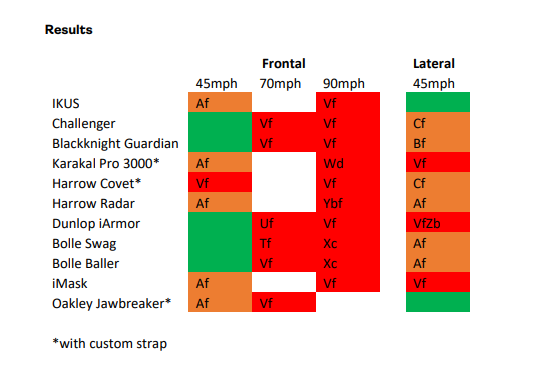
Conclusions
Wearing eye-protection does not provide universal protection and there remains a risk whether it is worn or not. There is no universal panacea.
In no instances during these tests did the eye-protectors cause an injury worse than would be caused by the direct impact of the ball. Wearing any form of eye-protection would be very likely to reduce the risk or degree of injury.
Throughout the testing, none of the polycarbonate lenses shattered or cracked.
Any eye-protection must be properly fitted to the individual and the use of a strap to retain the frames in place was important. Many of the failures were caused by the frame distorting, allowing the inside surface of the ocular to touch the eye, or occasionally rebounding into the eye. In almost all cases, although an injury may still result, it would be less serious.
At high speeds, some of the frames cracked, although retained their structural integrity.
Repeat testing weakened the structural integrity of the frame and subsequent failure was more likely. Therefore, consider replacing any eye-protection which has suffered a significant impact.
About 60% of the frames tested passed the head on test at 45mph, providing full protection under these circumstances.
Most eye-protectors failed at a 45mph, lateral deflection test, although a high degree of protection was still achieved. Most failures were caused by the frame distorting (with the inside surface of the ocular touching the iris on the headform) and “popping” the opposite lens or the frame being pushed across the eye.
No eye-protectors passed testing at 70mph or 90mph, although a level of protection was still achieved relative to no eye-protection being used.
Bi-ocular frames suffered, especially from higher speed impacts, and there were cases where one of the lenses detached from the frame, and both on one occasion.
Monocular lenses had the advantage that none of the lenses detached from the frame, but the surface area of the lenses was more likely to deform and leave an impression on the eye.
Lensless eye-protectors still permitted the ball to impact the eye, especially at higher speeds where the ball was forced further through the aperture. A spinning ball may cause scouring damage. A polycarbonate lens would keep the abrasive surface away from the eye, preventing scouring injuries.
A lens positioned further away from the eye would be less likely to deform sufficiently to impact the eye, assuming the retaining mechanism was secure.
Advice
Playing Real Tennis safely and sensibly is the best way of preventing injury, which includes not hitting recklessly and directly towards your partner and/or opponent(s) at any time. Lessons with your club professional should enhance the concept of safe play.
Statistically, the most likely incident will be a deflection impact, with the ball ricocheting off the racquet frame (or off the tambour/bandeau).
Eye injuries can happen and there is nothing so far identified as available in the current market which would completely protect the eye in all circumstances. Injuries at lower speeds for players wearing eye-protection would be largely prevented if the impact is head-on, but minor injuries are still possible from deflection off the racquet frame, where the ball is travelling laterally. Wearing a strap to secure the eye-protectors in position is beneficial.
Higher speed impacts increase the chance of injury, and the use of eye-protectors may only mitigate the damage suffered to the eye. However, wearing eye-protection does give the wearer a chance of reducing the likelihood of injury and preventing permanent damage. On none of the tests conducted did a polycarbonate lens crack or shatter.
C S DAVIES
H R ANGUS
August 2023
